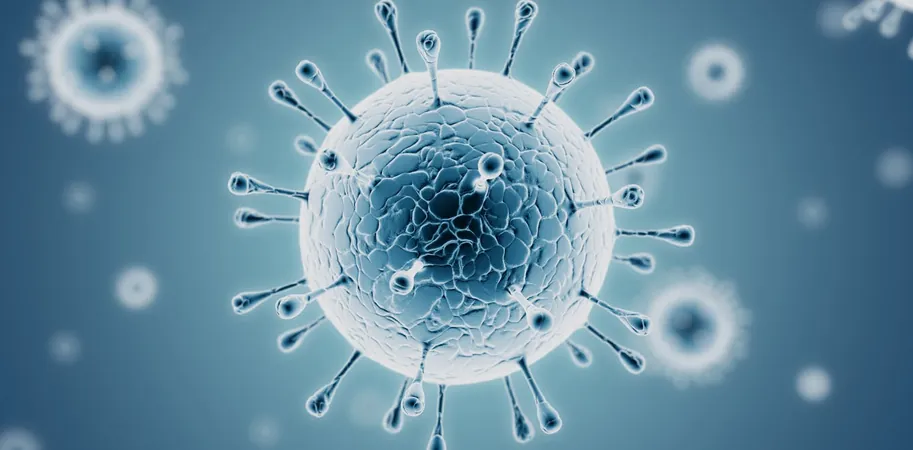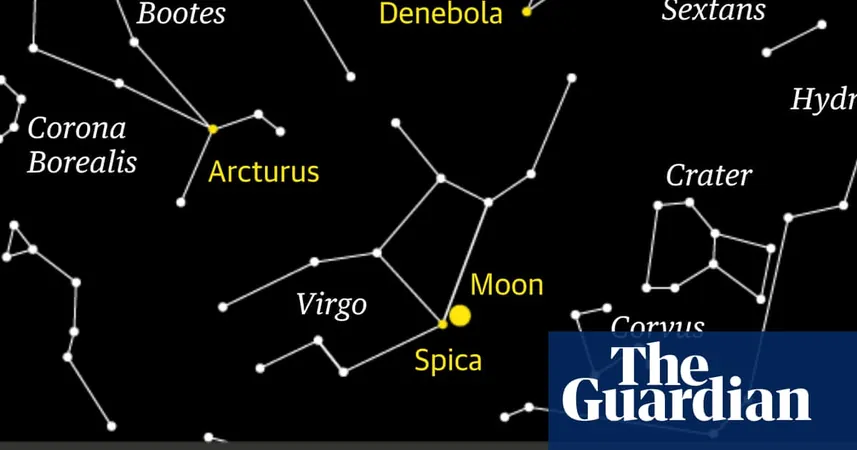
The Rise of the LP.8.1 COVID Variant: What You Need to Know!
2025-04-01
Author: Sophie
Understanding LP.8.1
LP.8.1 was first identified in July 2024 and is a descendant of the Omicron subvariant KP.1.1.3, which itself emerged from JN.1, a variant responsible for significant COVID-19 waves globally in late 2023 and early 2024. Given its rapid spread, the World Health Organization (WHO) classified LP.8.1 as a variant under monitoring in January 2024, noting its genetic modifications, which may enhance transmission.
This variant carries mutations at six key locations in its spike protein, the essential component that allows the virus to infect human cells. One notable mutation, V445R, appears to enhance binding to human lung cells, potentially facilitating its spread compared to other variants.
Symptoms and Severity
The good news is that the symptoms associated with LP.8.1 do not appear to be more severe than those related to existing strains. According to WHO assessments, the overall public health risk posed by LP.8.1 remains low on a global scale. As such, it is currently classified as a variant under monitoring rather than a variant of interest or concern, indicating that while it is spreading, it is unlikely to drastically alter the overall pandemic landscape.
The Continuing Concern
However, COVID-19 as a whole remains a significant health issue today. In Australia alone, there have been nearly 45,000 new cases this year, with approximately 260 patients hospitalized due to the virus. This number likely underrepresents the actual situation, as many individuals no longer test for or report their infections.
In NSW, LP.8.1 has become the third most prevalent strain, behind XEC and KP.3. Its presence has been increasing over recent months, with the trend expected to persist.
Globally, the ascent of LP.8.1 has been dramatic; sequences shared in the GISAID database show that LP.8.1's prevalence surged from around 3% at the end of 2024 to 38% by mid-March 2025. In some regions, such as the United States, LP.8.1 is responsible for approximately 55% of cases, while the UK reports it accounts for over 60%, raising concerns for the potential onset of a new wave of infections.
Vaccine Efficacy Against LP.8.1
Fortunately, existing COVID-19 vaccines, including the latest JN.1 formulations, are still believed to provide substantial protection against symptomatic infections and severe disease caused by LP.8.1. However, as a variant under monitoring, LP.8.1 will be closely studied by WHO member countries to understand its behavior further, including any possibilities of evading immunity.
In summary, while LP.8.1 is indeed a variant to watch, current scientific consensus indicates that with continued vigilance, vaccination, and adherence to health guidelines, it can be managed. Stay informed and protect yourself and your community as this latest chapter in the pandemic unfolds!









 Brasil (PT)
Brasil (PT)
 Canada (EN)
Canada (EN)
 Chile (ES)
Chile (ES)
 Česko (CS)
Česko (CS)
 대한민국 (KO)
대한민국 (KO)
 España (ES)
España (ES)
 France (FR)
France (FR)
 Hong Kong (EN)
Hong Kong (EN)
 Italia (IT)
Italia (IT)
 日本 (JA)
日本 (JA)
 Magyarország (HU)
Magyarország (HU)
 Norge (NO)
Norge (NO)
 Polska (PL)
Polska (PL)
 Schweiz (DE)
Schweiz (DE)
 Singapore (EN)
Singapore (EN)
 Sverige (SV)
Sverige (SV)
 Suomi (FI)
Suomi (FI)
 Türkiye (TR)
Türkiye (TR)
 الإمارات العربية المتحدة (AR)
الإمارات العربية المتحدة (AR)